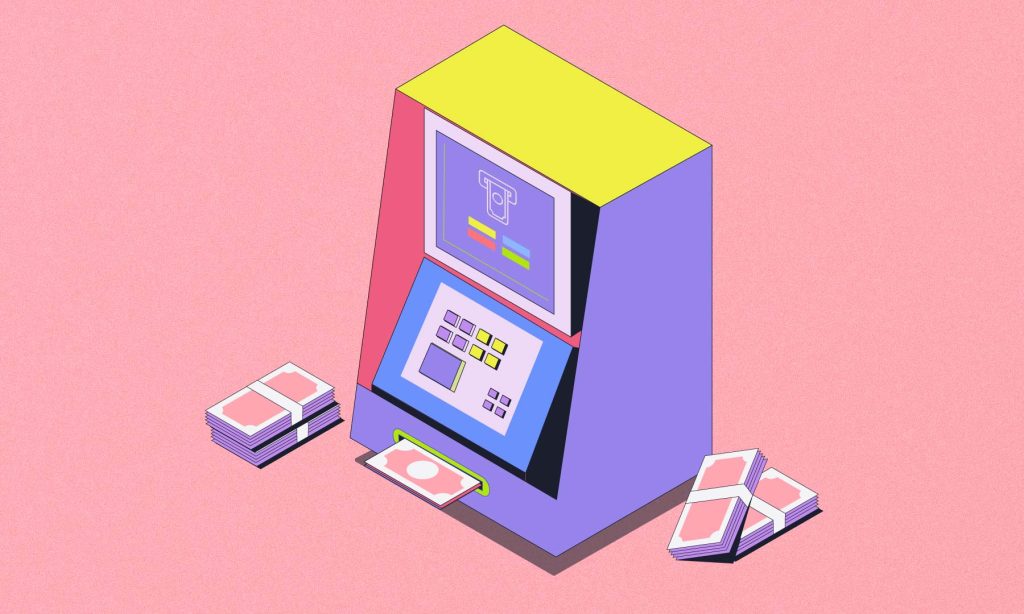Withdrawal, in personal finance, is the process of removing accumulated funds from financial products such as savings bank accounts and pension funds. For some financial instruments like fixed deposits, which banks usually offer, early withdrawals incur a penalty or surcharge. If you withdraw the funds before the maturity of such plans, you need to pay the charges stipulated by the provider. The charges are imposed based on the notion that immature withdrawals constitute a breach of contract between the investor and the financial institution.
How do withdrawals work?
Withdrawals work in different ways depending on the financial instrument and the investor’s requirement.
When a financial instrument matures gradually over time, periodical withdrawals are possible. For instance, interest accrued on a fixed deposit can be paid out to the beneficiary every year without touching the principal. Separately, beneficiaries can withdraw fully matured fixed deposits as a lump sum, which comprises the interest and the principal amount invested.
Similarly, you can draw money from a bank account at your convenience after you’ve made certain deposits and earned interest on such deposits. There are different ways to do this. You could write a cheque or use your debit card to withdraw money from an ATM.
Withdrawals are significant when you have invested in retirement products. When these instruments mature, beneficiaries usually have two choices: periodical payout or lump sum withdrawal. However, the service providers can stipulate certain conditions at the start of the contract to prevent early withdrawals. For instance, a retirement fund could put down the age limit at 75 years, which, if unfulfilled, makes a payout ineligible. National Pension System (NPS), a pension plan backed by the government of India, allows you to withdraw 60% of your corpus as a lump sum once you turn 60. Besides, NPS also allows partial withdrawals subject to certain conditions.
Types of withdrawals of funds
Investments need time to deliver the best returns. Without withdrawals, none of your financial investments would make sense. After all, you need the money to meet your requirements. The following discussion might help you understand the process better and make smart withdrawals from your investment accounts with reference to some popular investment products.
Crypto
You can withdraw investments made in cryptos in two different ways. Investors can convert their crypto into fiat (₹ or $) on a crypto exchange like CoinSwitch and receive the money in their bank accounts.
Stocks
When you invest in a stock, most of the time, you’re buying the stock on the spot market. This means that after 24-48 hours of your investment, your demat account will hold those stocks in your name. However, unlike crypto, these stocks can’t be directly exchanged for something else. First, they have to be ‘liquidated’—or converted to cash. Thus, you need to sell your shares (at market prices) first to make a stock withdrawal.
Retirement accounts
Withdrawing from retirement accounts is usually done with a few clear goals—outliving your savings, spending modestly, and remaining financially independent. Therefore, it is important to have a good strategy in place for your retirement. Most people aren’t very good at handling large sums of money. If you think you’re one of those, don’t opt for a lump sum payout. A periodical payout might work for you if you’re used to a monthly salary,
Bank account
A bank account is perhaps the simplest of financial investments. Financial technology has made modern banking ridiculously easy. There are several options available to withdraw your funds from a bank account. You could use UPI, one of the most popular options in India, or you could visit an ATM to withdraw cash.
Real estate
Real estate investments are typically capital-intensive, meaning they’re expensive and not everyone’s cup of tea. However, if you do have assets that you want to withdraw or encash, you will have to sell them first. Alternatively, if you wish to extract revenues without selling, you could consider renting your real estate to tenants or leasing it.
Examples of withdrawals
Investment withdrawals: You need to liquidate most investment products before withdrawing them. These include stocks, crypto (in some contexts), real estate, or commodities.
Cash withdrawals: Cash is the most liquid form of money, and bank account balances are highly liquid. You don’t have to liquidate them as they are highly liquid.
Fixed deposits: Also referred to as term deposits, they lie somewhere between the two withdrawal methods mentioned above. You can liquidate fixed deposits at any point in time before the maturity date. However, the beneficiary is liable to pay penalty charges for such withdrawals. The penalty amount varies from bank to bank.
Conclusion
Withdrawals are perhaps the most important part of investments—they’re why you make them in the first place. With so many different ways to withdraw, it is good to have a strategy to help you complete the process hassle-free. If you have a portfolio of several financial instruments, ensure that you think about how to make the most of each and choose the path that benefits you the most.
FAQs
What is withdrawal of capital meaning?
The withdrawal of capital refers to the act of removing or taking out invested funds or assets from a particular investment or financial venture.
What is withdrawal amount?
The withdrawal amount refers to the specific sum of money or assets that an individual or entity requests to be withdrawn from a financial account or investment.
What are 3 ways to withdraw money?
ATM, bank withdrawal, and electronic transfer are common methods to withdraw money.
What is withdrawal and deposit?
Withdrawal refers to the act of taking out money or assets from a financial account, while deposit refers to the act of adding money or assets into a financial account.








